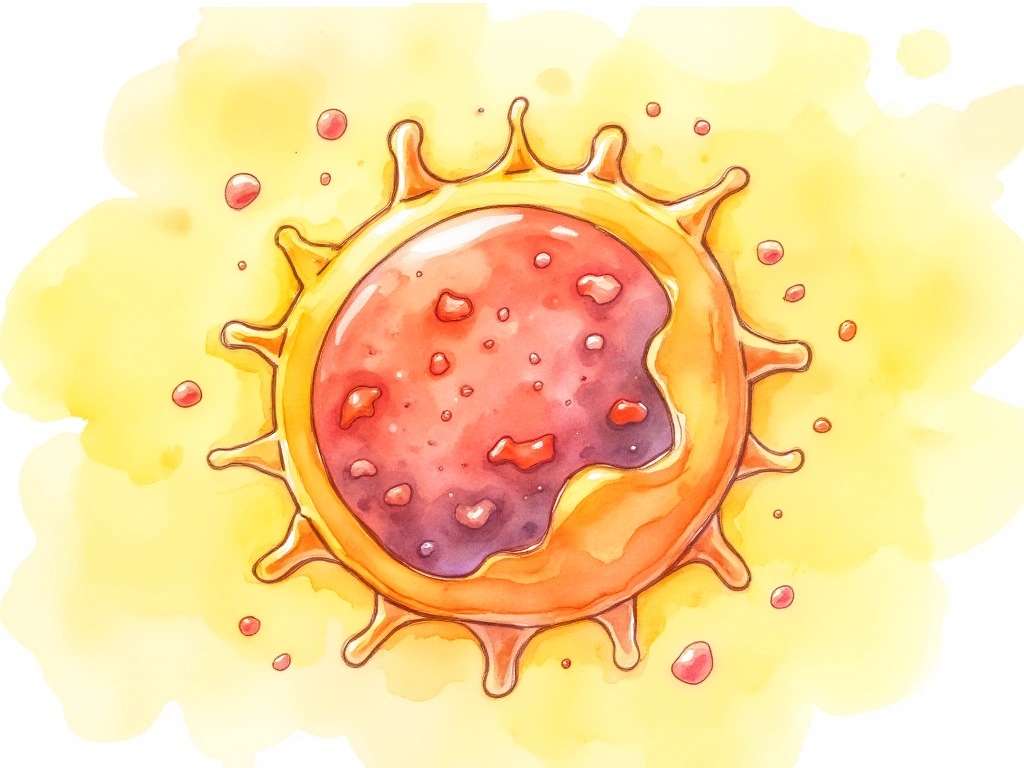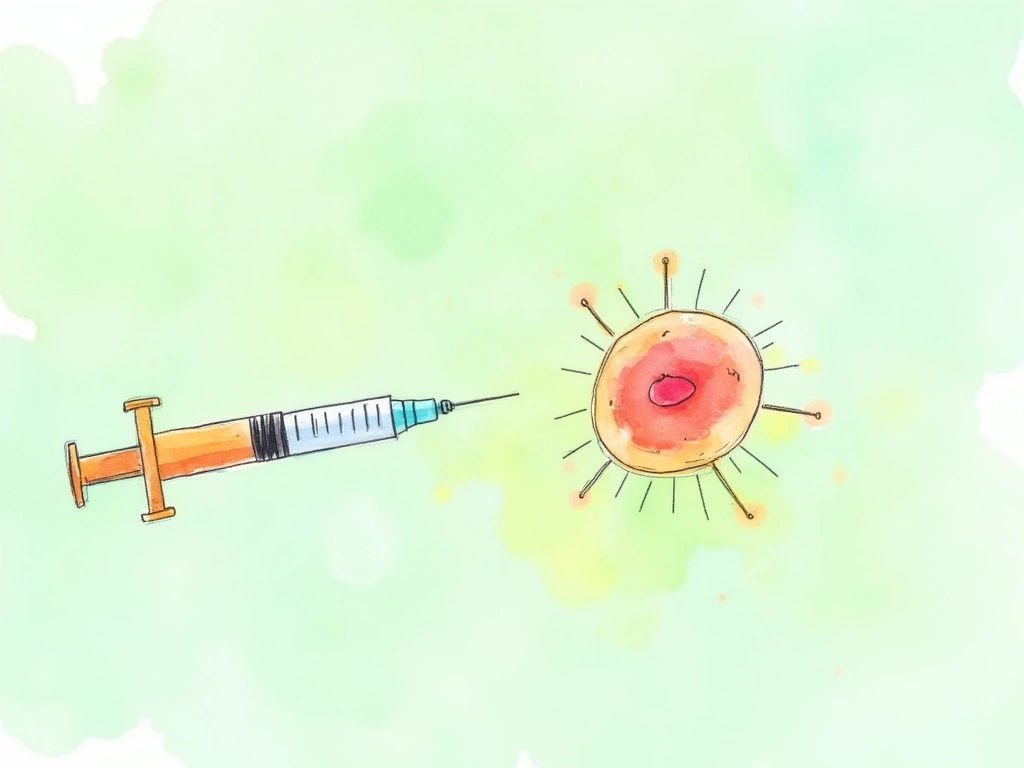- Seborrheic dermatitis is a common skin condition causing flaky patches, but is it autoimmune?
- While not autoimmune itself, research reveals intriguing connections between seborrheic dermatitis and autoimmune disorders.
- People with autoimmune conditions have a higher chance of developing seborrheic dermatitis, and often experience more severe cases.
- Emerging therapies targeting inflammation and immune response offer new hope for managing seborrheic dermatitis.
- The nervous system plays a crucial, and often overlooked role, in seborrheic dermatitis and its link to immunity.
Seborrheic dermatitis is a widespread, long-lasting inflammatory skin issue characterized by red, flaky, and greasy patches. These patches commonly appear on the scalp, face, chest, back, and skin folds. While the precise cause remains elusive, it’s understood to be a multifactorial condition influenced by:
- Overgrowth of Malassezia yeasts []
- Sebum (skin oil) production
- Immune system responses
- Hormonal fluctuations
- Stress levels
- Neurological factors
Although seborrheic dermatitis shares features with autoimmune diseases, it isn’t classified as one. However, individuals with autoimmune conditions exhibit a higher incidence of seborrheic dermatitis. Let’s delve into the intricate relationship between autoimmunity, inflammation, and this persistent skin concern.

Understanding Autoimmune Diseases
Autoimmune diseases arise when the immune system mistakenly attacks the body’s own healthy cells and tissues, identifying them as foreign invaders [The Immune System: A Very Short Introduction – Book by Paul Klenerman]. This misdirected immune response leads to inflammation and tissue damage. Autoimmunity is typically triggered by a combination of genetic predisposition and environmental factors.
Over 80 autoimmune diseases have been identified, ranging from common conditions like type 1 diabetes, rheumatoid arthritis, and multiple sclerosis to less frequent disorders. These diseases can affect virtually any organ or tissue in the body [1].

The Connection Between Seborrheic Dermatitis and Autoimmunity
Despite not being an autoimmune disease itself, seborrheic dermatitis demonstrates several connections to autoimmune disorders:
Increased Occurrence in Autoimmune Conditions
Individuals with autoimmune diseases, particularly those with multiple autoimmune conditions, experience seborrheic dermatitis more frequently than the general population [2] [3]. This elevated prevalence is especially noticeable in autoimmune gastrointestinal, skin, and joint diseases.
Severity Linked to Immune Status
People with weakened immune systems often suffer from more severe and treatment-resistant seborrheic dermatitis. This is evident in individuals with HIV/AIDS, where over 80% may be affected, and the severity of seborrheic dermatitis can mirror the progression of HIV [] [5].
Genetic Overlap
Genetic studies have identified genes involved in seborrheic dermatitis that also play a role in regulating immune responses and the skin barrier [4]. Dysfunctional signaling in these genetic pathways likely contributes to yeast overgrowth and increased vulnerability to skin inflammation.
Neurological Links
Seborrheic dermatitis has associations with neurological conditions like Parkinson’s disease and medication-induced parkinsonism [6]. This suggests potential neuro-immune interactions in the development of seborrheic dermatitis.
In essence, while not autoimmune in nature, seborrheic dermatitis has significant intersections with autoimmunity. Understanding these links can provide valuable insights into the mechanisms of the disease and potential new treatment approaches. Next, we’ll explore some leading theories about what triggers this bothersome skin condition.

Unpacking the Triggers: Inflammation and Immune System Imbalance
The precise causes of seborrheic dermatitis are complex and still under investigation. However, key factors related to inflammation and immune involvement are emerging:
Malassezia Yeast’s Role
Malassezia yeast is a natural inhabitant of human skin, but its overgrowth is strongly associated with seborrheic dermatitis flares. Byproducts from yeast metabolism or biofilms may trigger inflammation by affecting skin barrier proteins and immune cells [7].
Skin Microbiome Imbalance
Beyond Malassezia, imbalances in bacterial populations, such as Propionibacterium and Staphylococcus, are linked to worsening seborrheic dermatitis [8]. The interplay between these microorganisms and the immune system is crucial in disease development.
Immune System Dysregulation
Elevated levels of inflammatory markers are found in seborrheic dermatitis skin lesions. These include increased interleukins and interferon-gamma, indicating active involvement of immune cells in the inflammatory process [].
Neuro-Immune System Connection
Neurotransmitters, neuropeptides, and nerve growth factors can influence skin immune responses and likely contribute to neurogenic inflammation in seborrheic dermatitis [9].
Endocannabinoid System Influence
The endocannabinoid system plays a role in regulating skin inflammation. Early research suggests that targeting this system with cannabinoid creams or supplements may help manage seborrheic dermatitis by restoring skin balance and reducing inflammation [10].
[IMG: Concept image showing microbes, immune cells and nerves interacting to drive inflammation underlying seborrheic dermatitis]
It’s clear that immune dysregulation and inflammation are central to seborrheic dermatitis. A deeper understanding of these intricate mechanisms is paving the way for innovative treatment strategies.

Emerging Therapies: Targeting Inflammation and Immunity
Traditional treatment for seborrheic dermatitis often involves topical antifungal and anti-inflammatory medications, frequently requiring long-term use. However, adherence to these regimens can be challenging, and inflammation often returns once treatment is discontinued.
Excitingly, new therapeutic approaches are emerging as our understanding of seborrheic dermatitis expands:
Advanced Topical Anti-Inflammatories
New non-steroidal, barrier-repair creams incorporating botanical extracts with anti-inflammatory properties are showing promising results in clinical trials [11].
Biologics and JAK Inhibitors
While not yet specifically tested for seborrheic dermatitis, biologics and JAK inhibitors, are transforming the treatment of other inflammatory skin conditions like eczema and psoriasis [7]. These immunomodulators may offer potential for severe, treatment-resistant cases of seborrheic dermatitis.
Integrative Medicine Approaches
Gentle nervine herbs, adaptogens, probiotics, and supplements aimed at balancing the skin microbiota and supporting immune regulation warrant further investigation as complementary therapies.
Lifestyle Modifications
Dietary changes, improved sleep, regular exercise, stress management, and other healthy lifestyle choices that reduce systemic inflammation may play a supportive role in managing seborrheic dermatitis holistically.
While more research is needed, directing treatment towards reducing inappropriate inflammation and restoring skin barrier and immune balance is a logical strategy based on our growing knowledge of seborrheic dermatitis.

The Nervous System’s Vital Role
The nervous system’s involvement in seborrheic dermatitis deserves further emphasis. This connection offers exciting avenues for improving our understanding and management of this challenging skin disorder.
Research highlights the close collaboration between the peripheral nervous system in the skin and the local immune system. This partnership is crucial for regulating normal skin functions and responses to threats [12]. A healthy nervous system also plays a role in keeping inflammation in check.
Dysfunction in cutaneous nerves and neurotransmitter signaling appears to contribute to the inflammation and pathology observed in skin conditions like seborrheic dermatitis [13]. Neurogenic inflammation describes how nerves amplify inflammatory responses once triggered.
Alterations in skin neurobiology are characteristic of seborrheic dermatitis lesions [14]. Furthermore, the link between seborrheic dermatitis flare-ups and neurological conditions like Parkinson’s disease reinforces the idea of neuro-immune connections in this condition [6].
Could influencing nerve signaling offer a way to improve seborrheic dermatitis? Intriguingly, a case report demonstrated that repeated stellate ganglion nerve blocks led to near remission in a patient with previously treatment-resistant seborrheic dermatitis [15]. By modulating sympathetic nerve activity and neurotransmitters, this treatment helped restore balance and reduce inflammation.
Further research into the neurological aspects of seborrheic dermatitis is clearly warranted and could lead to transformative new treatment options for restoring healthy skin function.

Conclusion: Seborrheic Dermatitis – A Complex Interplay
In conclusion, while not strictly an autoimmune disease, seborrheic dermatitis is intricately linked to autoimmunity through complex and still-evolving mechanisms. The nervous, immune, and microbial systems are all interconnected in this skin disorder. Unraveling these connections offers promising new therapeutic directions focused on calming inappropriate inflammation and restoring skin barrier balance. The future is bright for seborrheic dermatitis research, with ongoing discoveries illuminating the intricate workings of this common skin condition!

No Comments
Be the first to start a conversation